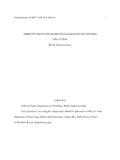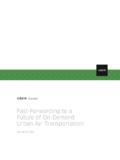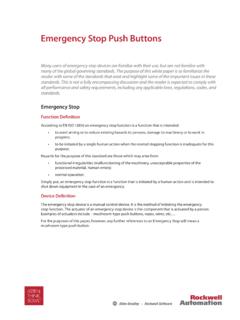Transcription of Cleaning of Breast Pump Kits for Multiple Use by …
1 Cleaning of Breast Pump Kits for Multiple Use by the Same Mother in healthcare Settings A discussion paper for Information This discussion paper has been reviewed and is supported by Perinatal Services BC Oversight Council, Health Canada, Midwives Association of BC, and the Provincial Infection Control Network. Breast milk should be the only food or drink that a baby is offered for the first six months of Not all babies are able to feed at their mother s Breast , and therefore, some women may need to hand express or pump their milk for their babies. Once there is an indication that expressed Breast milk is needed, hand expression should be initiated ideally within the first six hours of life. healthcare providers should support mothers with other strategies to increase milk supply, such as skin-to-skin contact and Breast massage. This document applies to the mother who will be using an electric Breast pump.
2 Questions and concerns have been expressed by healthcare providers in BC regarding the Cleaning of single use Breast pump accessory kits by the same mother and confusion about the current recommendations being shared. The purpose of this document is to provide healthcare providers working in perinatal settings in BC with information to clarify best practice around the Cleaning of Breast pump kits if reused by the same mother. This information is intended to help each facility to make policy decisions. In preparing this document, clarity was sought from Breast pump manufacturers, Health Shared Services BC (HSSBC), infection control, and Health Canada, and a literature review was conducted. Several conversations took place with the regulatory body of Health Canada which is responsible for administering the Medical Devices Regulations of the Food and Drugs Act in order to understand the impact of a guidance document they released in 20112.
3 The following is the response from Dr. Philip Neufeld, Health Canada: The Medical Devices Regulations classify Breast pump kits as Class II medical devices. As such, manufacturers must obtain a license from the Medical Devices Bureau (MDB) of HC [Health Canada] before the kits may be sold. A manufacturer applying for a Class II license decides whether the device will be labeled as intended for single use, limited reuse, single patient use, or reusable. MDB does not determine this labeling and usually does not question it unless it appears to pose a health risk. For most Class II devices (and this includes Breast pump kits), MDB does not review instructions for use or safety and effectiveness data before issuing a license. Health Canada (that is, MDB) has not told any manufacturer of Breast pump kits that the kits are semi-critical contact or that they require high level disinfection after every use by the same mother, or that they may not be sold as single patient devices.
4 Health Canada has published a guidance document entitled "Information to Be Provided by Manufacturers for the Reprocessing and Sterilization of Reusable Medical Devices". Note that it is addressed to manufacturers, not users. It asks manufacturers to provide adequate reprocessing instructions to users. It does not determine what the appropriate procedures should be. That is left to the manufacturer. Again, HC does not usually question the manufacturer's recommended reprocessing instructions unless they appear to present a health hazard. If hospitals buy a pump kit labeled as home use or single use, and choose to clean it for reuse by the same mother, this Cleaning of Breast Pump Kits: PSBC, October 2013 Page 2 is not a violation of the Medical Devices Regulations. To manage their civil liability, hospitals should ensure that the practice meets accepted infection control guidelines and their own, or their Province's, infection control policies and directives.
5 (The use of the term reprocessing in this discussion paper includes disinfection, Cleaning and sterilization.) A literature search for documented infections associated with Breast pump use was completed by the health librarians at the College of Registered Nurses of BC along with an environmental scan of other guidance documents in Canada pertaining to this subject. Very few recent articles were found that demonstrated any association with infection in newborns to the Breast milk pumping process. None of the literature reviewed demonstrated a clear connection between infections in newborns and the Breast pump equipment, although important deficiencies in the use and maintenance of Breast pumps was listed as one of the possible sources of infection, among other potential Two older studies did isolate contaminates from within the Breast pump machine itself, believed to be a result of milk backing up into the pumping ,5 Another case report describes a mother with a Breast abscess from Serratia marcescens who noticed a pink discoloration of Breast pump equipment.
6 Subsequent cultures grew Serratia in the Breast milk and Breast pump. The purpose of this report was to recommend that mothers continue Breast feeding while on antibiotics and did not examine the process for using and Cleaning the Breast Conclusion: Based on current evidence and information, Perinatal Services BC s provincial Oversight Council strongly recommends against considering Breast pump kits as single use products as this recommendation by Breast pump kit manufacturers is not based on new evidence. In other words, Perinatal Services BC continues to support the reuse of single user Breast pump kits by the same mother following appropriate Cleaning between uses. Reasons include: 1. sterilization or high-level disinfection of kits between each use by the same mother is neither practical nor necessary; 2. providing a new, sterile kit to each mother for every use is cost prohibitive and environmentally concerning; and 3.
7 Unless the manufacturer has provided instructions for reprocessing equipment between users these kits are only to be re-used by the same mother. Recommendations: 1. A mother may reuse a Breast pump kit as long as washing, rinsing, and drying of the kit between each use is done as per facility Cleaning instructions (see #2). 2. Illustrated Cleaning instructions and a dedicated area for washing must be provided to the (A sample of Cleaning instructions is provided in Appendix A.) 3. Point of care healthcare providers need to understand and be competent in the proper Cleaning process, so that they are able to ensure that the mothers have been adequately educated. 4. An individual risk assessment should be carried out to ensure that each mother is capable of Cleaning the kit as required. 5. Each facility should evaluate their physical setting to ensure that there is an appropriate sink and counter top area for washing and drying of these Breast pump kits.
8 6. If it is deemed that the physical setting does not provide an appropriate sink and counter top area or if the mother is unable to comply with Cleaning instructions it may be safer to provide a new kit for each pumping session. Cleaning of Breast Pump Kits: PSBC, October 2013 Page 3 7. Each facility should consult their infection control professional, lactation consultant and/or perinatal practice leader before determining if new kits will be used for each pumping session or if kits can be washed between uses by the same mother. These recommendations are consistent with guidance provided to Ontario healthcare providers by the Provincial Infectious Diseases Advisory Cleaning of Breast Pump Kits: PSBC, October 2013 Page 4 References 1. United Nations Children s Fund UK. ( ) Unicef UK. Baby friendly initiative Step 5, best practice standards for establishing and maintaining lactation and breastfeeding in neonatal units.
9 Unicef: London. 2. Health Canada. Guidance Document: Information to be Provided by Manufacturers for the Reprocessing and Sterilization of Reusable Medical Devices (2011). 3. Jones, B, Gorman L, Simpson H, Curran E, McNamee S, et al. (2000). An outbreak of Serratia marcescens in two neonatal intensive care units. Journal of Hospital Infection 46: 314 319 4. Gransden WR, Webster M, French GL, Phillips I. (1986). An outbreak of Serratia marcescens transmitted by contaminated Breast pumps in a special care baby unit. Journal of Hospital Infection 7: 149 54. 5. Boo N, Nordiahy A, Alfizahy H, Nor-Rohaini A, & Limy V. (2001). Contamination of Breast milk obtained by manual expression and Breast pumps in mothers of very low birthweight infants. Journal of Hospital Infection 49: 274-281 6. Faro J, Katz A, Barrens P, & Ross P. (2011). Premature Termination of Nursing Secondary to Serratia marcescens Breast Pump Contamination.
10 Obstetrics and Gynecology 117 (2):485-485. 7. Gilks J., Price E., Hateley P., Gould D., Weaver G. (2012). Pros, cons and potential risks of on-site decontamination methods used on neonatal units for articles indirectly associated with infant feeding, including Breast pump collection kits and neonatal dummies. Journal of Infection Prevention 13(1): 16-23. 8. Doxtator L, Zoutman D. (2006). Management of Breast pump kits: a review. Canadian Journal of Infection Control 21(2): 92 5. 9. Rhodes, J. (2012). Evidence-based recommendations for Breast pumping hygiene. Journal of Perinatology-Neonatology, special supplement 25(3): 13-15 10. Provincial Infectious Diseases Advisory Committee. Best Practices for Infection Control Prevention and Control in Perinatology In All Health Care Settings that Provide Obstetrical and Newborn Care. 2012 Cleaning of Breast Pump Kits: PSBC, October 2013 Page 5 Appendix A: Sample Cleaning Instructions for Single-Use Breast Pump Kits For preterm or infants requiring intensive care, single-use, sterile bottles with sterile lids should be used for each pumping session.











